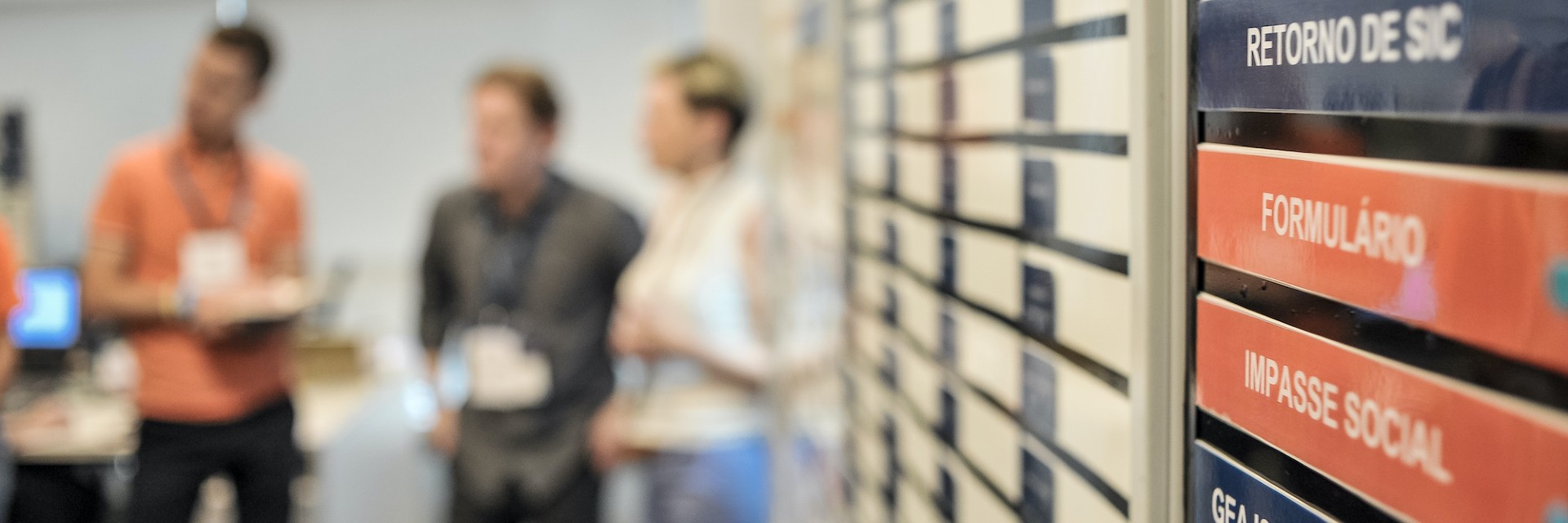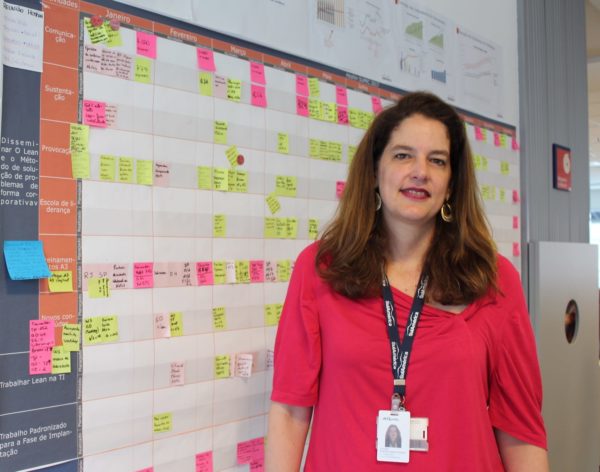Sparring about your Lean issue?
Call René
What does it take to support a Lean transformation from within? A reflection on the role of the Lean team in the turnaround of the Brazilian insurance company SulAmérica.
The decision to start thinking and working with Lean at SulAmérica was a top-down decision. It was part of the company's strategy to create more value for customers with our products and services and also to establish a single process for all business units. The challenge for SulAmérica was to create more synergy within the departments.
To begin our journey, we counted on the support of the Lean Institute Brasil, whose guidance helped us spread the Lean theory in the company and offer practical training to our employees.
Our Lean efforts began in the automotive segment, in part because we saw many opportunities to reduce our administrative expenses, which accounted for 14% of all expenses. The first step in the project was to map the value stream of automotive processes and focus on three activities in particular - policy issuance, claims and repair shop payouts. The payment project was smaller in scope, but we thought it would allow us to get results quickly to more easily evaluate the role Lean could play in the business, which was confirmed by the fact that we exceeded the A3 targets just three months after its inception.
The second and more challenging project involved redesigning the claims handling process at our automotive centers in 35 different branches across the country, which became the focus of SulAmérica's most successful A3. It took six months for people to agree to the changes, but eventually we identified two branches where we could conduct a pilot project. Three months later, the results of our experiment were known, and everyone quickly asked to switch to the new model. That was our best business case for Lean Thinking.
At that time, our focus was on engaging cross-functional teams in implementing VSM and writing A3s for each process we were trying to improve. As a Lean team, our approach was very hands-on: we were involved in every project that was initiated, from planning to reporting phases. To prove the value of using the Lean methodology, all results were reported monthly to the COO and quarterly to the company's board of directors.
As part of reviewing our own process (using a value stream map ourselves), we created a standardized work to encourage leaders and sponsors to take more ownership of the improvements and the results they achieved. The leader became responsible for getting the A3 results and reporting monthly to the sponsor and the Lean team. We also created a clear meeting schedule and better defined everyone's roles and responsibilities. Everything was presented, discussed and agreed upon with the leader and sponsor before starting an A3 project. These simple measures had a huge impact. The Lean team stopped simple project management and started generating real learning opportunities for SulAmérica staff. At the same time, we changed the system for assessing A3s: previously they were only shown to sponsors at the end of the improvement cycle, without giving them a chance to process the information and discuss it with the A3 owner. We created a new norm where the leader was asked to show the left side of the A3 to the sponsor before starting work on the right side, which led to better expectation building and better communication between key people (frontline and management), without us having to play the role of liaison. This freed up much of our time so that we could focus on more improvements.
Three years after this journey, we created a model line in our automotive department. To teach the people working in the model line, many theoretical concepts were implemented over the course of eight months. We worked a lot, but not everyone immediately believed in the Lean ideas (everything was pre-planned then, with large batches of theory instead of offering the right knowledge to the right people at the right time). Still, it was important for us in the Lean office to go through that process because it helped us see the potential of Lean for our organization and figure out what changes we needed to make in which areas, based on the needs people expressed. Eventually, the tools we introduced became more useful and people began to embrace them, which greatly accelerated our progress.
This year, we started a second model line in our healthcare department, but we are using a less scripted approach fueled by the real needs of the teams. We have incorporated the five guiding principles identified in a recent white paper from the Lean Global Network's Lean Healthcare Initiative as key to accelerating a Lean transformation. We hope this new approach to modeling will help us accelerate and perpetuate change in health departments. So far, those departments have implemented only some of the Lean concepts (mainly A3s or Daily Management).
Over the years, our discussions within the Lean- and management teams became more and more about the idea of setting up a Lean Management System at SulAmérica. We didn't know exactly what that entailed until we heard a presentation by Dr. Carlos Frederico Pinto of the Instituto de Oncologia do Vale at our first Lean Day. It was an eye-opener and it convinced our COO to give it the go-ahead. Crucially, at that point he decided to involve the Human Resources department (he understood that this had to do with corporate culture, rather than a process in a particular area) to facilitate the spread of this and other Lean practices in SulAmérica. It worked, and Lean is now being spread in several areas of the company. In particular, this meant teaching the Lean Transformation Framework to the management team and taking A3 to everyone else.
The biggest problem we face now is that some areas use only one or two Lean tools in a disconnected way. For example, A3 thinking and daily management are used in many areas, but depending on where you go, teams tend to use one or the other. When they use both, these tools are not necessarily connected. It was really our fault: when we started the repair shop payments project, daily management was used to improve capacity rather than as a system to solve problems. The yokotes we did after that ended up "selling" that same approach throughout the company. So we are now trying to do a turnaround and better connect day-to-day management with problem solving. Elsewhere, our success with A3 (attributed in part to being able to gamify our A3 course) has become a problem because everyone wants to do it, but sometimes doesn't understand that there is more behind Lean Thinking than A3s alone.
Hoshin kanri, which many people at SulAmérica are currently involved in, has had an incredibly positive effect on our work. Since we introduced it, we see people from different areas discussing the same problems and beginning to work together to solve them. Although many of them, frustratingly, still don't associate hoshin with our Lean journey, it has undoubtedly made a huge contribution to that. Hoshin represents the link between the many projects we have launched up and down the road and our vision and common goals. It allows us to bring the different pieces of our journey together and keep everyone moving in the same direction.
First, one of the most important things we learned during our journey is that making Lean attractive and even fun is essential to its success. We experienced this with A3 Thinking, for example: it takes time to master the art of A3, but we found that introducing our game and transforming problem solving into a game got people excited and ultimately improved the quality of the A3s they prepare.
Second, we learned the importance of sharing knowledge (yokoten), especially on the gemba. By showing the people of SulAmérica practical examples on the gemba during the training, they were able to make a connection between what they saw and the problems they faced in their own workplace.
Third, we learned early on that Lean transformation is a matter of the people themselves and themselves. The goal of our lean team is to turn people into independent improvers and problem solvers. In the automotive segment we have achieved that, but in other departments we still have a lot of work to do.
As we began spreading Lean Thinking throughout the company, its sustainability became a concern. To address this, we recently introduced, with the help of the Lean Institute Brasil, a new evaluation tool based on the Lean Transformation Framework for those departments experimenting more deeply. We have found it to be extremely useful in understanding what next step to take in each of those areas. More importantly, we involved the area managers in those conversations, hoping to remediate them and put them in charge. In the future, this tool may be the final step before we pass the torch to our managers, to make sure they share the same vision and can pick up where we left off.


Sign up for our newsletter